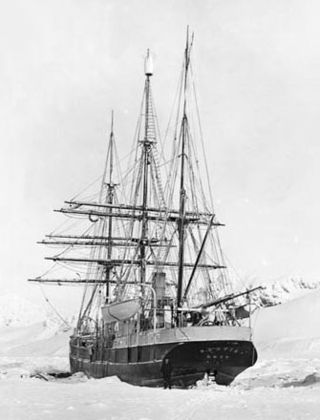Related Research Articles

In trade, barter is a system of exchange in which participants in a transaction directly exchange goods or services for other goods or services without using a medium of exchange, such as money. Economists distinguish barter from gift economies in many ways; barter, for example, features immediate reciprocal exchange, not one delayed in time. Barter usually takes place on a bilateral basis, but may be multilateral. In most developed countries, barter usually exists parallel to monetary systems only to a very limited extent. Market actors use barter as a replacement for money as the method of exchange in times of monetary crisis, such as when currency becomes unstable or simply unavailable for conducting commerce.

Greenland is an island autonomous territory of Denmark in North America. It lies between the Arctic and Atlantic oceans, east of the Canadian Arctic Archipelago. Greenland is the world's largest island. It is one of three countries that form the Kingdom of Denmark, the others being Denmark and the Faroe Islands; the citizens of all three countries are citizens of Denmark and the European Union. The capital and largest city of Greenland is Nuuk.

Knud Johan Victor Rasmussen was a Greenlandic–Danish polar explorer and anthropologist. He has been called the "father of Eskimology" and was the first European to cross the Northwest Passage via dog sled. He remains well known in Greenland, Denmark and among Canadian Inuit.

The history of Greenland is a history of life under extreme Arctic conditions: currently, an ice sheet covers about eighty percent of the island, restricting human activity largely to the coasts.

Denmark and the former real union of Denmark–Norway had a colonial empire from the 17th through the 20th centuries, large portions of which were found in the Americas. Denmark and Norway in one form or another also maintained land claims in Greenland since the 13th century, the former up through the twenty-first century.

The Norse exploration of North America began in the late 10th century, when Norsemen explored areas of the North Atlantic colonizing Greenland and creating a short term settlement near the northern tip of Newfoundland. This is known now as L'Anse aux Meadows where the remains of buildings were found in 1960 dating to approximately 1,000 years ago. This discovery helped reignite archaeological exploration for the Norse in the North Atlantic. This single settlement, located on the island of Newfoundland and not on the North American mainland, was abruptly abandoned.

Aasiaat or Ausiait, formerly Egedesminde, is a town in the Qeqertalik municipality in western Greenland, located on its namesake island in the heart of Aasiaat Archipelago at the southern end of Disko Bay. With a population of 2,980 as of 2021, it is Greenland's fifth-largest town.

Blonde Eskimos or Blond Eskimos is a term first applied in accounts of sightings of, and encounters with, light-haired Inuit peoples of Northern Canada from the early 20th century, particularly around the Coronation Gulf between mainland Canada and Victoria Island. Sightings of light-haired natives of the Arctic have been mentioned in written accounts as far back as the 17th century.

Ittoqqortoormiit, formerly known as Scoresbysund, is a settlement in the Sermersooq municipality in eastern Greenland. Its population was 345 as of 2020 and has been described as one of the most remote settlements on earth.

Ilimanaq, formerly Claushavn, is a settlement in Avannaata municipality in western Greenland. It had 53 inhabitants in 2020. The modern name of the village is Kalaallisut for "Place of Expectations".

Oqaatsut, formerly Rodebay or Rodebaai, is a settlement in Avannaata municipality, in western Greenland. It had 29 inhabitants in 2020. The modern name of the settlement is Kalaallisut for "Cormorants". The village is served by the communal all-purpose Pilersuisoq store.
John Cunningham was a Scottish nobleman, explorer, Dano-Norwegian naval captain, and Governor of Finnmark.
Nipisat Island is a small, uninhabited island in the Qeqqata municipality in central-western Greenland.

The Royal Greenland Trading Department was a Danish state enterprise charged with administering the realm's settlements and trade in Greenland. The company managed the government of Greenland from 1774 to 1908 through its Board of Managers in Copenhagen and a series of Royal Inspectors and Governors in Godthaab and Godhavn on Greenland. The company was headquartered at Grønlandske Handels Plads at Christianshavn.

Scotia was a barque that was built in 1872 as the Norwegian whaler Hekla. She was purchased in 1902 by William Speirs Bruce and refitted as a research vessel for use by the Scottish National Antarctic Expedition. After the expedition, she served as a sealer, patrol vessel and collier. She was destroyed by fire in January 1916.

Commercial whaling in Britain began late in the 16th century and continued after the 1801 formation of the United Kingdom and intermittently until the middle of the 20th century.

The bark Danmark is best known for her role as expedition ship for the Danmark expedition (1906–08), so named after the ship, but had a long prehistory as a whaler under the name Sir Colin Campbell of Peterhead and later as a sealer named Magdalena of Tønsberg/Kristiana.
Earl Fauconberg was launched at Whitby in 1765. From 1784 on she made numerous voyages as a Greenland whaler. She was lost there in 1821.
Princess Charlotte was launched in 1814 at South Shields. She initially sailed as West Indiaman. Then between 1818 and 1819 she made a voyage to India and one to Ceylon, both under a license from the British East India Company (EIC). On her return in 1819, Princess Charlotte became a whaler in the northern whale fishery. She continued whale hunting until ice crushed her on 14 June 1856.
Several ships have been named Oscar:
References
- ↑ Clements Robert Markham (sir), ed. (1874). Ocean highways: the geographical record. Oxford University.